Alicante, located on the southeastern coast of Spain, is home to a wide variety of birds. From small songbirds to majestic raptors, the region is teeming with avian life.
Visitors to the area can enjoy seeing some of the most iconic birds of Spain, including the griffon vulture, the golden eagle, the Bonelli’s eagle, and the Spanish imperial eagle.
There are also a variety of migratory species that pass through Alicante, including many species of ducks, waders, and shorebirds. With its diverse habitats and the Mediterranean Sea, Alicante is an ideal destination for birders of all levels.
1. Western Swamphen
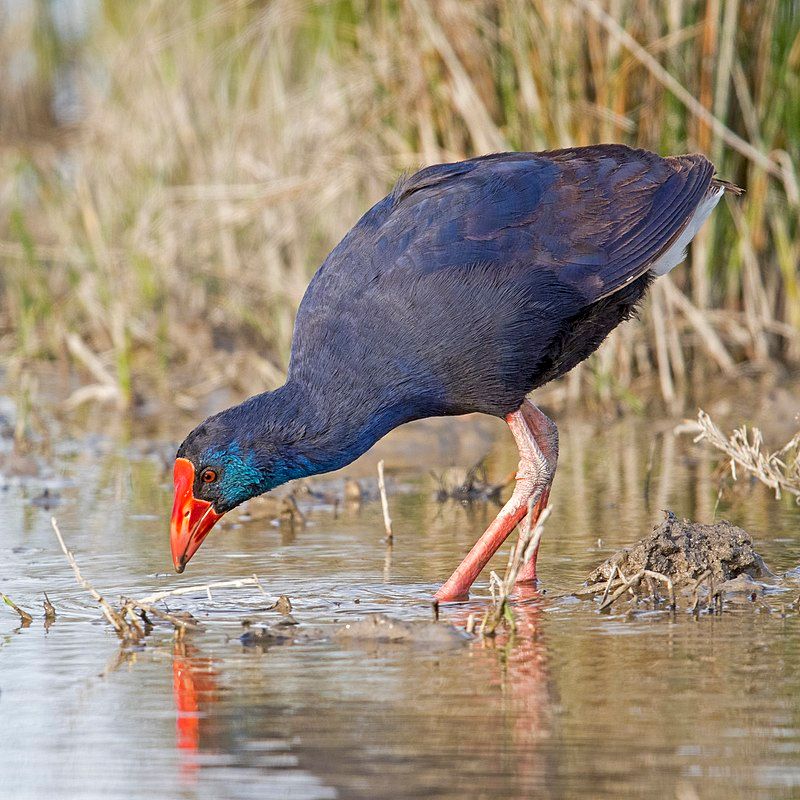
The western swamphen is a species of railbird found in the Rallidae family. It is also known as the talève sultane or sultana bird due to its French name. It is a sizeable bird, resembling a chicken in size, and is easily identifiable in its natural habitat.
It sports bright and colorful plumage, with a red bill and frontal shield. Its large feet are distinctive and help to distinguish it from other species of swamphen. The western swamphen is one of the six species of purple swamphen found in the world.
| Kingdom | Animalia |
| Phylum | Chordata |
| Class | Aves |
| Order | Gruiformes |
| Family | Rallidae |
| Genus | Porphyrio |
| Species | P. porphyrio |
2. Squacco Heron
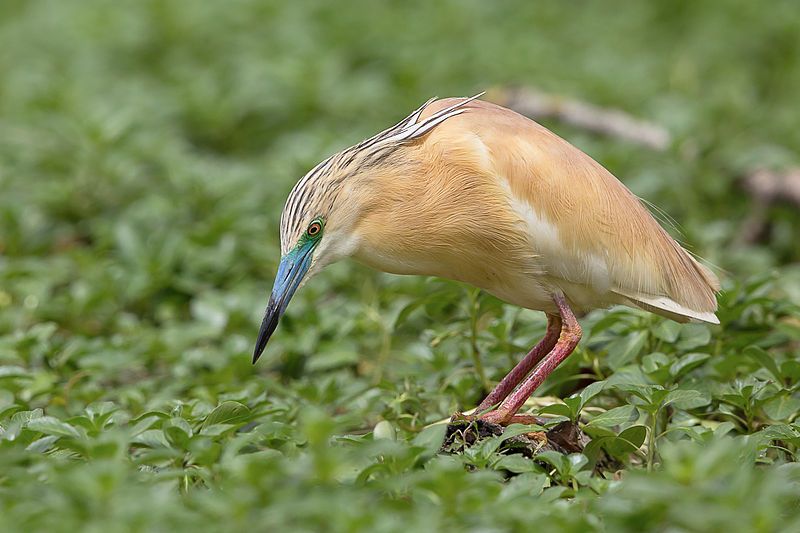
The squacco heron is a small species of heron found in the Old World. It is 44-47 cm long in total, with a body length of 20-23 cm and a wingspan of 80-92 cm. This species is found in breeding habitats in parts of southern Europe and the Greater Middle East.
This species has adapted to a wide range of habitats, from wetlands and lakes to coastal areas and grasslands. They mainly feed on small fish, amphibians, and invertebrates that they hunt in shallow waters.
During the breeding season, these herons can be seen in large groups of up to several hundred. They build their nests in tall trees and lay up to four eggs.
The squacco heron is an important species to its local ecosystem, as it helps control populations of small fish, amphibians, and invertebrates.
| Kingdom | Animalia |
| Phylum | Chordata |
| Class | Aves |
| Order | Pelecaniformes |
| Family | Ardeidae |
| Genus | Ardeola |
| Species | A. ralloides |
3. Slender-billed Gull
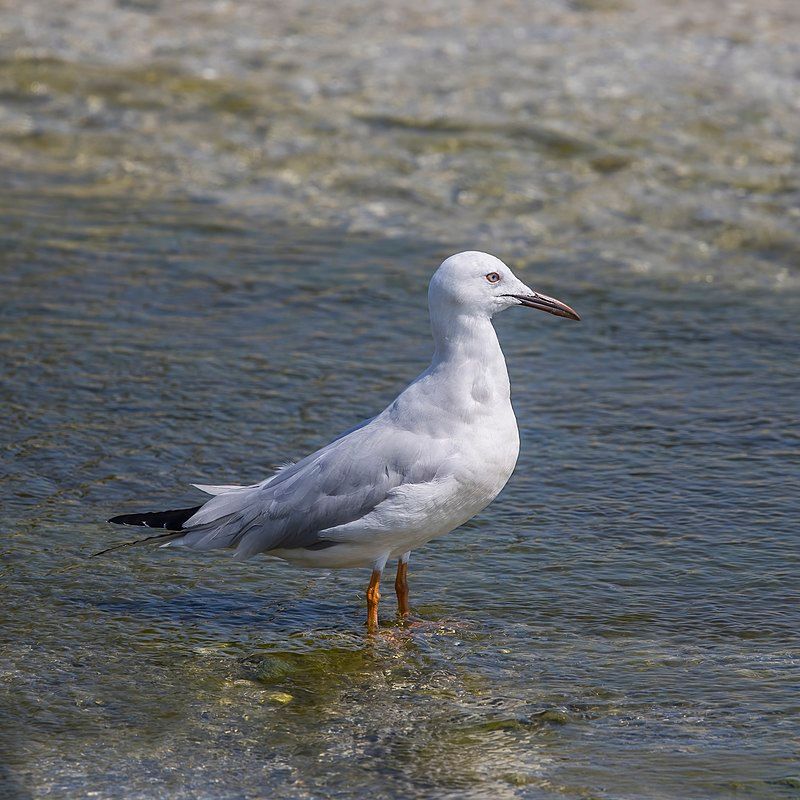
The slender-billed gull is a species of mid-sized gull that is found across a few regions in the world. They are known to breed in areas around the Mediterranean Sea and the western Indian Ocean.
This species is known to be somewhat migratory, with a significant portion of the population travelling further south to winter over in places such as North Africa and India. The slender-billed gull typically breeds in coastal lagoons and islands.
Their breeding grounds are quite localized and are typically found in the areas mentioned above. During the winter months, they migrate south in search of warmer temperatures and more food.
This species can be found in areas such as North Africa and India during this time of the year. This species of gull is known to be quite social and can often be seen in large flocks.
They are also quite adaptable and can be found in a variety of habitats, such as coastal areas, estuaries, and marshes.
They have a wide diet that includes fish, crustaceans, insects, and even carrion. Overall, the slender-billed gull is a unique species of mid-sized gull that is found mainly in the Mediterranean and the western Indian Ocean.
Their breeding grounds are quite localized, but they are known to migrate south to winter over in places such as North Africa and India. They are social and can be found in large flocks, while also being quite adaptable and able to thrive in a variety of habitats.
| Kingdom | Animalia |
| Phylum | Chordata |
| Class | Aves |
| Order | Charadriiformes |
| Family | Laridae |
| Genus | Chroicocephalus |
| Species | C. genei |
4. White-headed Duck
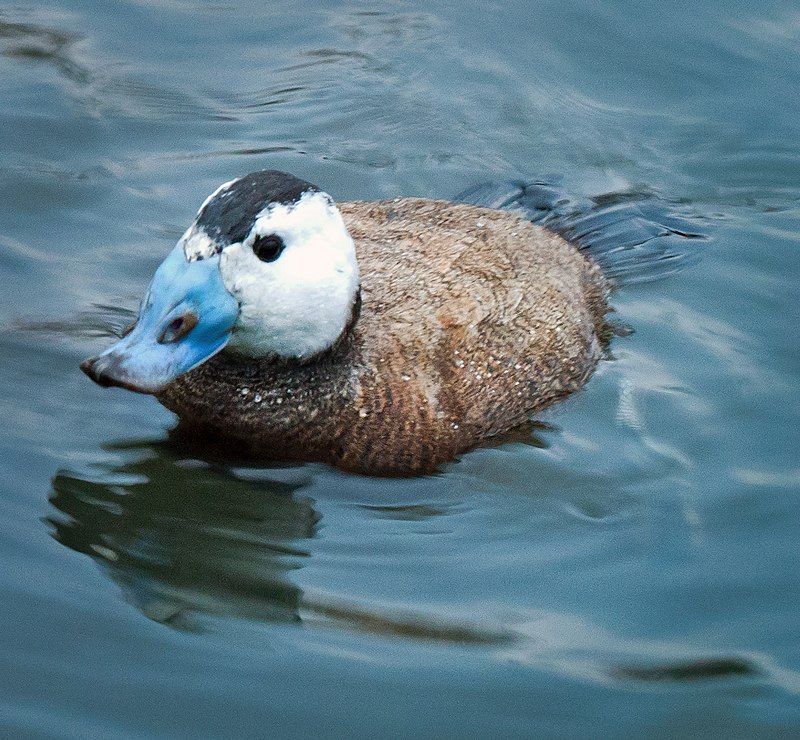
The white-headed duck is a small diving duck that measures about 45 cm in length. Males have a white head with a black crown, a blue bill, and reddish-grey plumage. Females, on the other hand, have a dark bill and a duller coloring.
When it comes to breeding, the white-headed duck prefers lakes with open water and dense vegetation at the margin. This vegetation provides a safe and sheltered environment to lay eggs and raise the ducklings.
The white-headed duck is a solitary species that will often stay away from other birds and forage alone. It is also a very proficient diver and can stay underwater for up to 30 seconds at a time.
This species is listed as Vulnerable, as its population numbers have decreased due to a range of environmental threats.
| Kingdom | Animalia |
| Phylum | Chordata |
| Class | Aves |
| Order | Anseriformes |
| Family | Anatidae |
| Genus | Oxyura |
| Species | O. leucocephala |
5. Red-knobbed Coot
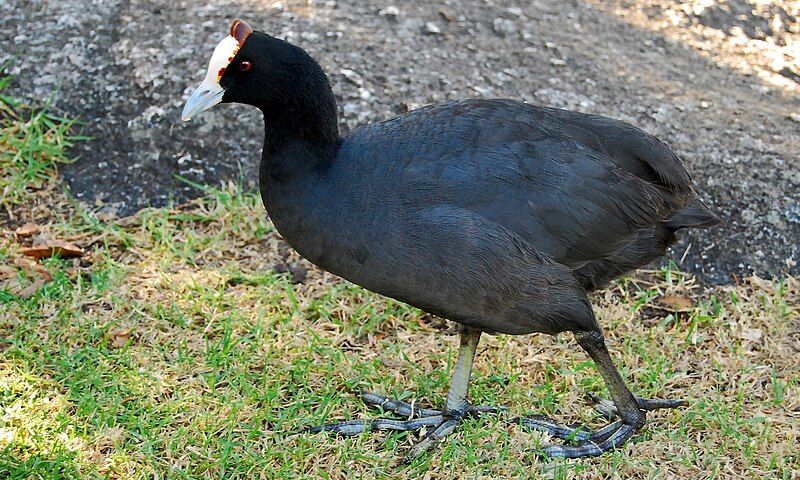
The red-knobbed coot, also known as the crested coot, is a species of bird that belongs to the Rallidae family. This family consists of rails and crakes, which are similar to ducks and geese. The red-knobbed coot is found in many parts of Africa, as well as in southern Spain.
It is a resident breeder, meaning it stays in the same area for most of the year. The red-knobbed coot lives near freshwater lakes and ponds, where it builds its nest. It tends to make its nest of dead reeds, either near the edge of the water or even on the water itself.
The coot usually lays around seven eggs in its nest. The red-knobbed coot is an important bird species in its native regions, as it provides food for other animals and helps to maintain the local ecosystem.
It is also a popular bird to watch, as the bright red knobs on its head make it easily identifiable.
| Kingdom | Animalia |
| Phylum | Chordata |
| Class | Aves |
| Order | Gruiformes |
| Family | Rallidae |
| Genus | Fulica |
| Species | F. cristata |
Conclusion
Alicante is home to a wide variety of bird species, from the majestic Bald Eagles to the tiny Hoopoes. With its wide range of habitats, from wetlands to mountains, Alicante is a great place for bird-watching.
Whether you’re an experienced birder or a novice, you’ll be sure to see some amazing birds in Alicante.